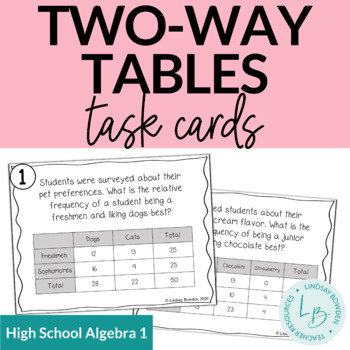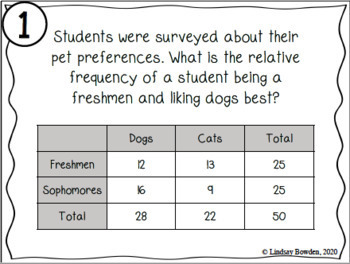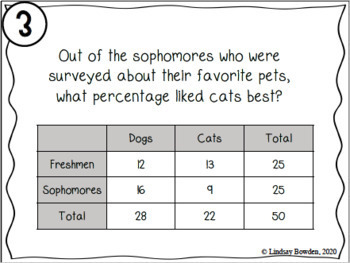Two-Way Frequency Table Task Cards
- PDF
What educators are saying
Also included in
- This is a complete statistics unit for an Algebra 1 course. All assessments (quizzes, study guide, and test) are editable to fit your needs. This unit is included in my Algebra 1 Curriculum.*Note: This unit is best suited for on-level or lower-level/special education math classes. Supplements will mPrice $49.00Original Price $49.00
Description
The digital version of this resource for Google Drive™ using Google Forms can be found here: Distance Learning: Two-Way Tables Digital Task Cards. You are able to edit this assignment using Google Forms and assign it to your students via Google Classroom.
These two-way frequency table task cards ask students to find:
- Joint, marginal, and conditional relative frequencies
- Percentages using the tables
12 task cards + answer keys
You may also like:
- Two-Way Frequency Table Notes & Worksheets
- Box and Whisker Plots Notes & Worksheets
- Histograms Notes & Worksheets
Terms of Use:
This product should only be used by the teacher who purchased it. This product is not to be shared with other teachers. Please buy the correct number of licenses if this is to be used by more than one teacher.
Did you know?
You can receive TPT store credits to use on future purchases by leaving feedback on products you buy! Just click on "My Purchases" under "Buy"!
Connect with me!






